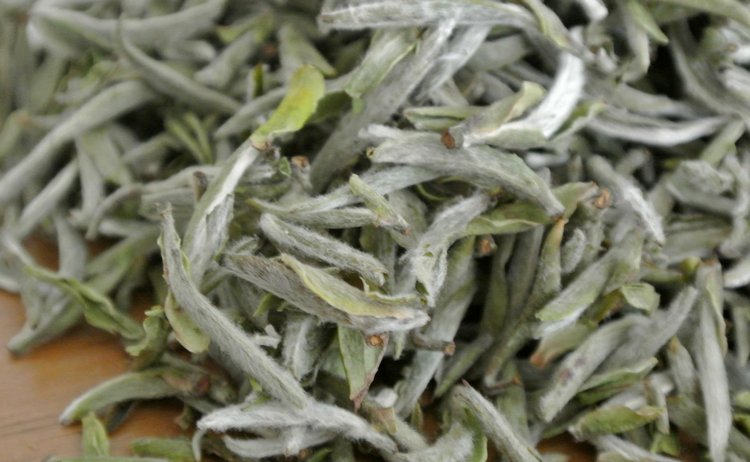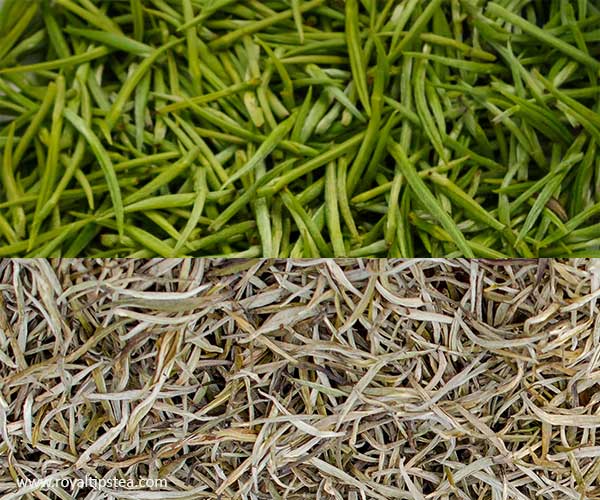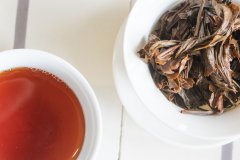The types of white tea are mainly divided into four categories: the description of the flavor and taste of white tea in what season and how to brew it?
Very similar to green tea, white tea does not undergo the process of oxidation and fermentation, but it has a subtle taste. Usually characterized by its soft buds and large whole leaves, the fragrance spectrum they produce is particularly attractive to tea lovers who prefer mild and low-key flavors. Although there are not many kinds of white tea, it can even be said that there are only a handful of white tea, but the tea system of white tea is really unique.
White peony is the earliest white tea, but also the origin of white tea, white tea first appeared in the Song Dynasty. Emperor Huizong of the Song Dynasty, who ruled China from 1100 to 1125, and tea lovers mentioned this point in his "Tea Theory". According to a legend, the people who picked the tea were young girls in gloves, and their images evoke the purity and freshness emitted from the delicate buds of the tea. White tea, like all the most gorgeous clothes in the empire, was only for the emperor, and no one else had ever tried it.
Baihao Silver Needle White Tea as we know it today is produced in a more modern way. It consists entirely of buds, and its iconic shape and color are easy to identify.

At the end of the 18th century, it was called the "silver needle" because its beautiful appearance was very similar to the needle and the color was white. Since then, its floral fragrance and soft and smooth tea have won the hearts of tea lovers all over the world.
The visual beauty of this white tea is attributed to a native variety, Fuding Dabai, which was discovered in the wild in the mountains near Fuding City, Fujian Province in 1857.
Its growing period from early March to mid-November is longer than ordinary varieties, and its robust, downy silver buds remain tender longer than most varieties. Although it is also used in the production of black tea and green tea, Fuding Dabai has an ideal white tea bud.
According to the weather conditions in spring, the harvest of Bai Hao Yinzhen will be scattered over a period of 10 to 15 days. Select only undamaged and unopened buds.
It takes about 40,000 buds to produce one kilogram of silver, all of which are picked by hand.
In China, the three counties traditionally famous for the quality of white tea are Fuding, Zhenghe and Jianyang, all in Fujian Province.
However, other provinces, especially Hunan, have taken advantage of this strong demand to develop their own white tea. Enthusiasm for white tea has also spread beyond China. Many other countries, such as India, Sri Lanka, Nepal and even Malawi, are now producing their own variants.
White tea is more and more on the market. In this style, there are many different kinds of tea to choose from.
First of all, there is the classic "silver needle" white tea, which only contains buds.

There are more austere white teas, made only of large leaves that wither in the sun. These other types of tea are becoming more and more popular and contribute to the democratization of white tea.
Old white tea from Fujian Province in eastern China. Since the beginning of the 21st century, people's enthusiasm for this product has gradually led to the expertise of tea craftsmen who want to be different.
Zhenghe Dabai is more prominent than its cousin Fuding Dabai tea in its mellow thickness. With the passage of time, the tea can be better matured and give a light and refreshing and typical white tea. Its flavor has obvious apples and pears, and subtle woody aromas are coordinated to produce a pleasant aftertaste that can only be achieved by this type of tea.
Important Notice :
前街咖啡 FrontStreet Coffee has moved to new addredd:
FrontStreet Coffee Address: 315,Donghua East Road,GuangZhou
Tel:020 38364473
- Prev

When is the best time to drink tea? in what season? what kind of tea is the best and most fragrant tea? green schedule.
For newcomers who discover the tea tree catalogue for the first time, it seems strange to have a range of ever-changing products. But it only takes a few drinks to feel the excitement of fresh tea picked directly from the garden. The taste of any kind of tea is the result of a variety of factors, including weather, field practice and handmade after picking. So every batch of tea from a single place of origin
- Next

How to brew good taiwan red jade black tea? The correct brewing method and flavor characteristics of Taicha No.18 black tea
Taicha No. 18, also known as Hongyu or Sun Moon Lake Black Tea. Each year, Taicha No. 18 fascinates us with its unique creativity, minty flavor and soothing characteristics, perfectly combined with the start of the cool season. Its large leaves are black and twisted. In their dry state, we can already appreciate its fruity and camphor aromas. The tea soup gives off a bright
Related
- Why does hot American coffee taste bitter? Difference in proportional concentration between hot American and ice American
- Is espresso stored overnight in the refrigerator harmful to your body? Is frozen coffee better than freshly ground coffee?
- What parameters and proportions of water temperature should be used to grind and brew fresh coffee beans? Why can't I drink freshly roasted coffee right away?
- Customers have "changed" Manner's new products! Shop assistant: Please don't mess around!
- Remove sockets in customer areas at Starbucks stores?! Netizen: I won't go if I really tear it down
- What is the difference between the taste steps of sun-dried coffee and washed coffee? Why is sun-cured coffee sweeter and washed coffee sour?
- The recipe for salty grapefruit dirty is revealed! Coffee Festival salty grapefruit dirty coffee making materials parameters ratio milk share!
- How about the flavor of Sunlight 74158 at Sidamo Banshaha Mathieu Processing Factory in Ethiopia? 74158 Share the proportion of coffee brewing parameters!
- What effect does Italian American coffee with filter paper have? Will coffee taste better if it is put on filter paper at the bottom of the powder bowl?
- What is the color difference in coffee beans? What are the characteristics of honey processed coffee beans? Why are the anaerobically treated coffee beans uneven in color?

